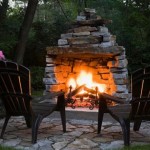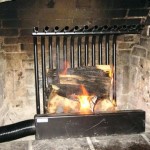Fireplace Remote Replacement: A Comprehensive Guide
A fireplace remote control offers convenience and enhanced user experience, enabling adjustment of flame height, temperature, and other settings from a comfortable distance. Over time, fireplace remotes can malfunction, get lost, or become damaged, necessitating a replacement. Understanding the replacement process, potential issues, and available options is crucial for maintaining the functionality and convenience of a fireplace system.
This article provides a comprehensive guide to fireplace remote replacement, covering various aspects from identifying the correct replacement to troubleshooting common problems. It aims to equip readers with the knowledge needed to navigate the replacement process effectively and ensure a seamless transition to a new remote system.
Identifying the Correct Replacement Remote
The initial step in replacing a fireplace remote involves correctly identifying the remote model and system. This identification process ensures compatibility and proper functionality with the existing fireplace unit. Failure to accurately identify the correct remote can lead to purchasing an incompatible device, rendering it useless.
The primary method of identifying the remote model is by examining the existing remote itself. Typically, the model number is printed directly on the remote casing, often on the back of the device or inside the battery compartment. This model number serves as a crucial identifier for locating the exact replacement. In addition to the model number, noting the manufacturer of the fireplace and remote is also beneficial. Some manufacturers use proprietary remote protocols, meaning a remote will only work with fireplaces made by that specific brand.
If the original remote is lost or the model number is illegible, alternative methods of identification are required. Examining the fireplace unit itself can provide clues. The fireplace owner's manual usually includes information about the compatible remote models. This manual serves as a valuable resource for determining the correct replacement. The manual may also include the FCC ID of the remote which can be Googled to find matching remotes.
Another avenue for identification is contacting the fireplace manufacturer or a certified technician. Providing them with the fireplace model number allows them to identify the appropriate remote model number. This approach is particularly helpful if the original remote is no longer available or if there are uncertainties regarding compatibility. Authorized fireplace dealers can also offer assistance in identifying the correct replacement based on the fireplace model.
Finally, consider the type of fireplace and the remote's functionality. Is it a gas fireplace, an electric fireplace, or a propane fireplace? Does the remote control flame height, blower speed, thermostat settings, or simply turn the fireplace on and off? Understanding these features will help narrow down the options and ensure that the replacement remote offers the same functionalities as the original.
Understanding Remote Compatibility and Programming
Once the correct replacement remote has been identified, understanding compatibility and programming protocols is essential for successful integration with the fireplace system. Fireplace remotes operate using specific radio frequencies or infrared (IR) signals to communicate with the fireplace receiver. Compatibility hinges on the remote and receiver using the same communication protocol. Purchasing the correct remote model does not guarantee immediate functionality; programming or synchronization may be required.
Many fireplace remotes require a programming or pairing process to establish communication with the fireplace receiver. This process typically involves pressing a specific sequence of buttons on the remote and/or the receiver unit located within the fireplace. The exact programming procedure varies depending on the remote and fireplace model. Consult the owner’s manuals for both the remote and the fireplace for detailed instructions on how to program the remote. These instructions often involve holding down a “learn” or “sync” button on the receiver and then pressing a specific button on the remote within a designated timeframe.
Some remotes feature dip switches, small physical switches located on both the remote and the receiver. These switches must be set to the same configuration for the remote to function correctly. The configuration is typically determined by the manufacturer and is outlined in the owner’s manual. Adjusting these switches ensures that the remote and receiver are communicating on the same channel.
Universal fireplace remotes offer an alternative to purchasing a direct replacement. These remotes are designed to be compatible with a wide range of fireplace models and brands. However, programming a universal remote can be more complex, often requiring the user to enter a specific code corresponding to the fireplace manufacturer and model. Universal remotes may not offer the full range of functionalities provided by the original remote, particularly features like precise flame height control or advanced thermostat settings.
It is also important to verify that the batteries in both the remote and the receiver are fresh and properly installed. Low battery power can interfere with the remote's ability to transmit signals or the receiver's ability to receive them. Before attempting any programming, ensure that the batteries in both devices are new and of the correct type.
If problems persist after attempting to program the remote, professional assistance may be necessary. A certified fireplace technician can diagnose the issue and determine whether the problem lies with the remote, the receiver, or another component of the fireplace system. They possess the expertise to troubleshoot complex issues and ensure proper remote functionality.
Troubleshooting Common Fireplace Remote Issues
Even with the correct replacement remote and proper programming, issues can still arise. Understanding common problems and their potential solutions is crucial for ensuring ongoing functionality of the fireplace remote system. Troubleshooting these issues can often resolve minor problems without the need for professional intervention.
One of the most frequent issues is the remote not communicating with the fireplace receiver. When this occurs, the first step is to verify that the batteries in both the remote and the receiver are fresh and properly installed. Weak batteries are a common cause of communication problems. Replacing the batteries with new ones can often resolve the issue.
Interference from other electronic devices can also disrupt the remote’s signal. Cordless phones, Wi-Fi routers, and other wireless devices can operate on similar frequencies, causing interference. Try moving these devices away from the fireplace and the remote to see if this resolves the communication issue. Metal objects can also block or weaken the remote's signal. Ensure there are no obstructions between the remote and the receiver.
If the remote is programmed correctly but only works intermittently, the receiver may be faulty. Check the wiring connections to the receiver. Ensure that all wires are securely connected and that there are no signs of damage or corrosion. Loose or corroded connections can impede communication between the remote and the fireplace.
Another potential issue is a malfunctioning remote sensor on the fireplace receiver. The sensor is responsible for receiving the signal from the remote. If the sensor is damaged or dirty, it may not be able to receive the remote's signal effectively. Clean the sensor with a soft, dry cloth. Avoid using liquids or harsh chemicals, as these can damage the sensor.
If the remote is displaying an error message, consult the owner’s manual for the remote and the fireplace. The manual will often provide explanations for common error messages and troubleshooting steps to resolve them. Error messages can indicate a variety of problems, such as low battery power, communication errors, or internal malfunctions.
In some cases, the problem may lie with the fireplace itself rather than the remote. Issues such as a faulty gas valve, a malfunctioning pilot light, or a blocked flue can prevent the fireplace from operating correctly. If the fireplace is not working even when the remote is functioning properly, it is essential to consult a qualified fireplace technician for diagnosis and repair.
Furthermore, confirm that the fireplace is receiving power. Check the circuit breaker to ensure that the fireplace circuit has not tripped. Inspect the power cord for any damage or fraying. If the fireplace is not receiving power, it will not respond to the remote, regardless of its functionality.
Finally, ensure that the pilot light is lit (for gas fireplaces). Some remotes will not activate the main burner if the pilot light is out. Refer to the fireplace owner's manual for instructions on how to relight the pilot light safely.
By systematically troubleshooting these common issues, many fireplace remote problems can be resolved without the need for professional assistance. However, if the problem persists or if the user is uncomfortable performing the troubleshooting steps, it is always best to consult a qualified fireplace technician to ensure safe and effective repair.

Gas Fireplace Remotes More Fireplaceremotecontrols Com

Rfc Model Fireplace Remote Control Grand Mate Noted Accessories Supplier

Valor Gv60 Max Remote Receiver 4002251 4002422 G6r H3tv4 R3au Friendly Fires

20 14 028 Fireplace Remote Control

Paramount Slim Line Remote For Electric Fireplace Inserts Part Blt Rc1

Skytech 1001th Thermostat Fireplace Remote Control

Kingsman Fireplaces Gtmrcp Remote Control Millivolt

Replacement Fireplace Remote Control Manuals Fireplaces Direct Learning Center

Dimplex Replacement Remote 6700520240rp Friendly Fires

Skytech 1001 A Fscrf On Off Fireplace Electronic Fan Sd Remote Control
Related Posts








